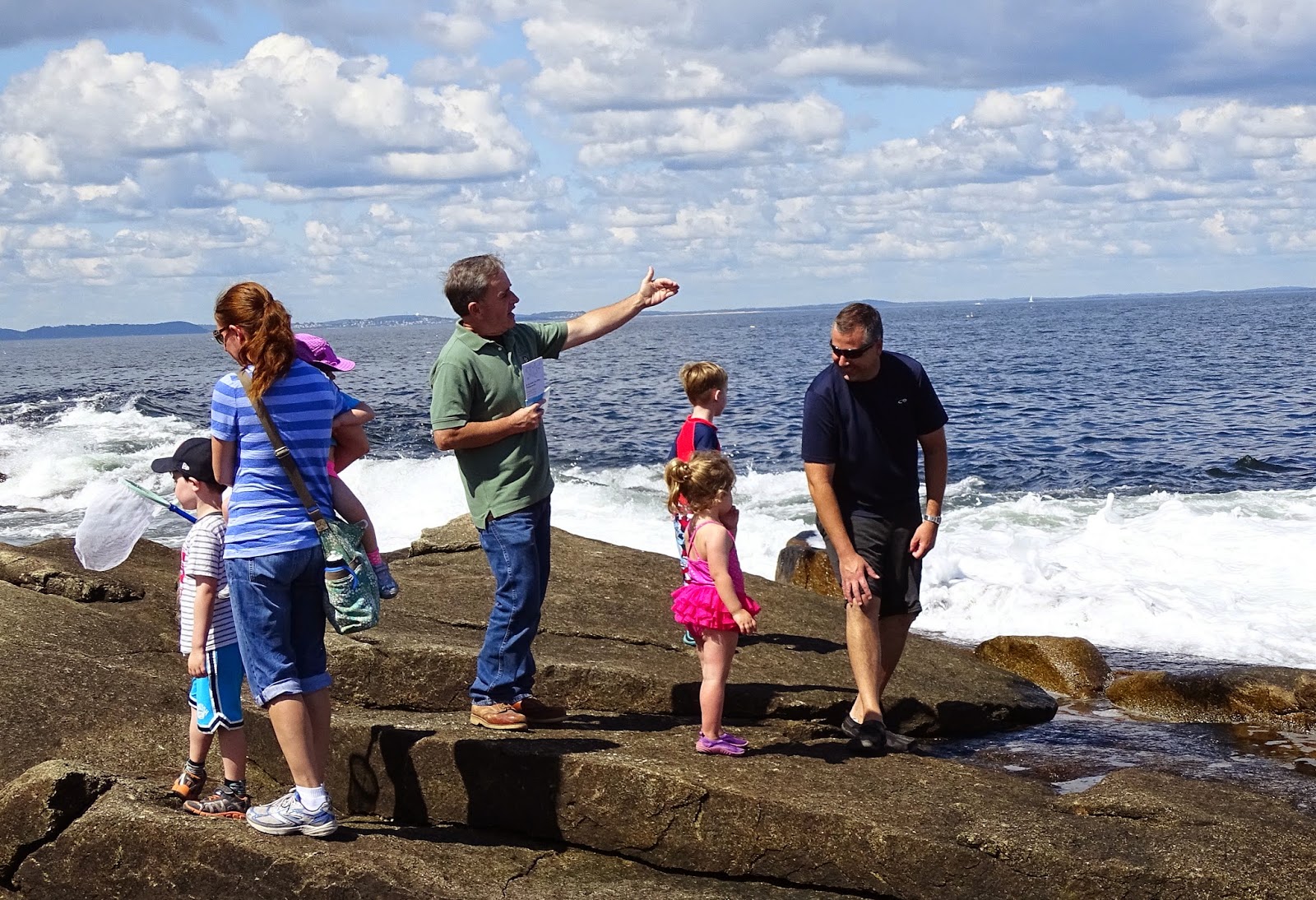 |
| Granite boulder |
 |
| Granite landscape, Halibut Point |
 |
| Folly Cove pier, the shipment point for Halibut Point granite a century ago |
Chemically similar blends of
magma that cool and petrify more quickly will not develop the combination of strength
and grain that characterizes granite. Compare
it to the finer-textured rock below, which may have been brought from afar by a
glacier, or eroded from a relatively quick-cooled intrusion within the bedrock.
 |
| An exotic boulder on the Halibut Point shoreline |
 |
| Boulder details |
Feldspar silicates make up much of the mass of
granite as well as shaping its particular 'behavior.' It's the lighter-colored
substance in the photo. It may take on pink, gray or brown tints according to
its chemical individuality and lend specific characteristics to the stone.
All
granites are felsic, relatively rich
in elements that form feldspar and quartz: silicon,
oxygen, aluminum, sodium, and potassium. Granites can be contrasted with mafic rocks, which are relatively richer
in magnesium
and iron (ferric). Incorporating denser
metals that predominate in the earth's core, mafic rocks such as basalt are heavier than granite. Felsic rocks tend to 'float' above them
in the earth's crust, forming the continents.
 |
| Quarry walls |
Granite begins as a
monolithic formation far below the earth surface. Cracks and seams develop as
conditions change. Incomprehensible pressures increase during tectonic
collisions. Conversely pressures decrease when the stone is relieved of miles-thick
overburden through millions of years of erosion. The accompanying expansions,
contractions, and shifts are expressed in the pattern of joints. According to
their placement the joints make the stone more or less desirable for quarrying.
All granite is not equal. The
cakey-looking Chelmsford granite utilized these days for curbstones on our
Cape Ann streets - cheaper to saw and split - disintegrates at the first
rap of a snowplow.
Mastering the challenges and
employing the qualities of Cape Ann granite imparts a satisfaction to tradesmen
and sculptors, as well as integrating their artisanship to the native terrain
with a cohesion for all to enjoy. Nature's vernacular engenders our own.
.JPG)


































